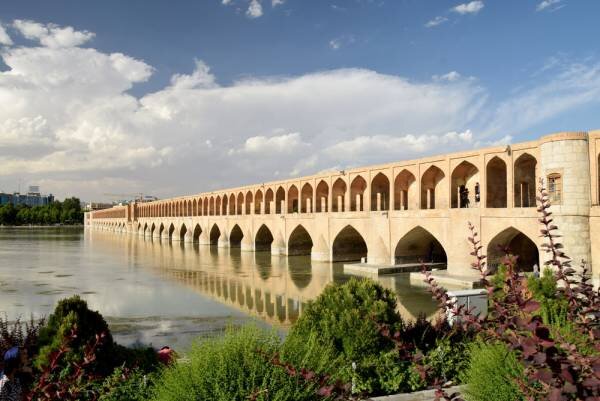Majestic Si-o-Se Pol undergoes urgent restoration

TEHRAN –Parts of Si-o-Se Pol, the 17th-century arch bridge widely known as a masterpiece of Persian architecture, has undergone some rehabilitation works in Isfahan.
Replacing worn-out bricks, repairing the bridge’s arcs as well as its pillars, which have been damaged over the years, are parts of the project being carried out by a team of experienced restorers and cultural heritage experts, the provincial tourism chief on Monday.
Ahead of the Iranian New Year’s Holidays, some historic sites scattered across the province including the historical bridge of Si-o-Se-Pol, are being renovated and restored to welcome visitors, Fereydoun Allahyari added.
Si-o-Se Pol, also known as Allahverdi Khan, is one of the Safavid-era bridges constructed over the Zayanderud River. The 298m-long monument has been served as both a bridge and dam. It is a popular meeting place when the locals and travelers gather to watch the sunset and catch the moment alongside the arches.
Soaked in a rich history and culture, Isfahan was once a crossroads of international trade and diplomacy in Iran. Now, it is one of Iran’s top tourist destinations for good reasons. The ancient city is filled with many architectural wonders such as unmatched Islamic buildings, bazaars, museums, Persian gardens, and tree-lined boulevards. It’s a city for walking, getting lost in its mazing bazaars, dozing in beautiful gardens, and meeting people.
The city has long been nicknamed as Nesf-e-Jahan which is translated into “half the world”; meaning seeing it is relevant to see the whole world. In its heyday, it was also one of the largest cities in the region with a population of nearly one million.
Isfahan is renowned not only for the abundance of great historical bridges but also for its ‘life-giving river’, the Zayandeh-Rood, which has long bestowed the city an original beauty and fertility. The cool blue tiles of Isfahan’s Islamic buildings, and the city’s majestic bridges, contrast perfectly with the encircling hot, dry Iranian countryside.
The huge Imam Square, best known as Naghsh-e Jahan Sq. (literary meaning “Image of the World”), is one of the largest in the world (500m by 160m), and a majestic example of town planning. Built in the early 17th century, the UNESCO-registered square is punctuated with the most interesting sights in Isfahan. Modern Isfahan is now home to some heavy industry, including steel factories and a nuclear facility on its outskirts, however, its inner core wants to be preserved as a priceless gem.
ABU/AFM
